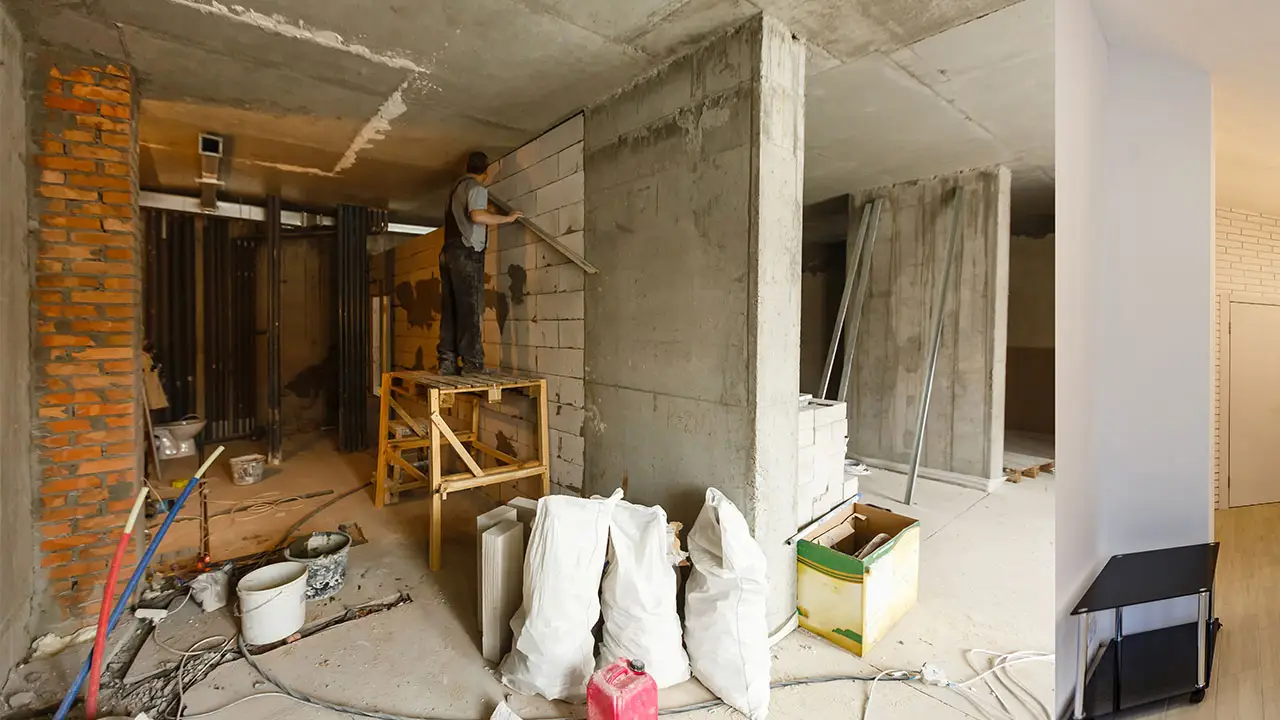What’s the difference between a home renovation and a remodel?

The Bankrate promise
At Bankrate we strive to help you make smarter financial decisions. While we adhere to strict , this post may contain references to products from our partners. Here's an explanation for .
Key takeaways
- Renovations are quick projects with minimal labor and material costs.
- Remodels involve large changes to your home, including hiring plumbers and electricians.
- The scope of your project will largely decide which term is a better fit.
Before you take on a new project, it’s important to understand the differences between a remodel versus renovation. Not only does each one come with its own range of costs, time frames and permit rules, but they may also differ in the value you’ll recoup from your investment. Considerations like these can help guide your decision and determine the scope of the project you choose.
Renovation vs. remodel
Though often used interchangeably, remodels and renovations are based on the scope of the project.
When you think of a home renovation, think of it as a refresh or minor makeover. A renovation typically entails projects that homeowners choose to do themselves, like painting, changing the hardware on kitchen cabinets and updating lighting. These projects are “spruce-ups” for the aesthetics of your home. Home renovations don’t break the bank and are often started and finished on the same weekend.
When you think of a remodel, think of it as a reconstruction or major project. A home remodel usually involves hiring professionals and may involve obtaining permits before the project starts.
A remodel may include raising a ceiling, moving a bathtub to a new wall, adding an extension or new room or even installing a kitchen island, complete with plumbing and electricity. A remodel is a commitment and can be quite expensive depending on the size and scope of the changes.
The cost of a remodel vs. renovation
A simple renovation can often be done for just a few hundred dollars. After all, paint supplies and light fixtures can be worked into just about any budget. A home remodel, on the other hand, may cost thousands of dollars.
Remodel and renovation costs average around $49,000, with most home projects ranging from $18,000 to $81,000, according to HomeAdvisor.
Breaking it down further, the data show that home remodels may cost anywhere from $5,000 to $150,000 or more. Home renovations cost $10 to $60 per square foot on average and could approach $150 per square foot depending on the room, your location, the size of your house and the type of materials used.
Renovate vs. remodel: which is the best for you
When deciding which home upgrades to prioritize, it pays to consider which projects will deliver the biggest return on investment. Some changes will increase your home’s value and equity more than others.
For instance, you’ll recoup 102.7 percent of what you spend to replace a garage door, but 22.7 percent of what you invest in making an upscale master suite addition, according to Remodeling’s 2023 Cost vs. Value Report. This analysis compares the average cost of 22 home remodeling projects and the estimated value each project retains.
On top of the value impact, there are other factors to consider. For example, it’s typically best to only spend money renovating or remodeling rooms you frequently use, and you should consider how long you plan to stay in your home. If a move is in the foreseeable future, a simple renovation may be the best option for you. The smallest touches can change a room’s energy without a big hit to your budget.
If it’s your forever home and the changes will increase the home’s functionality, a home remodel could be the better choice. For example, if you frequently host large dinner parties but have a tiny dining room and kitchen, it would make sense to do a large-scale remodel of that area to make it more functional for your needs — even if the project won’t have a high return on investment as far as your property value is concerned.
Evaluate your budget, motives, value payoff and future intentions with the home before deciding on the extent of the project, how much money you want to spend and where you want to spend it.
How to finance a remodel or renovation
There are many ways to finance remodels and renovations, but many homeowners opt for a personal loan, a home equity loan or a home equity line of credit (HELOC).
Personal loan
You can often get a personal loan in an amount that is greater than any credit card limit, and it will probably also have a lower interest rate than a credit card. This makes personal loans a less expensive way to finance any major housing project you take on.
Rates fluctuate with personal loans, but interest rates currently range from 5 percent to 36 percent, depending on the lender and factors like your income, debt-to-income ratio and credit score. Personal loan terms can range from one to 10 years, and loan amounts range from as little as $1,000 to as much as $100,000.
Home equity loan
If you have equity built up in your home, a home equity loan may outperform personal loan rates and could also be easier to obtain. A home equity loan uses a portion of the equity you’ve accrued in your home to secure a lump-sum loan that can be paid back over a long term.
This type of loan works well for large remodels, as you can borrow a significant amount of money at a low interest rate. The downside is that your home will be used as collateral for the loan if you can’t repay it.
Home equity line of credit
A HELOC lets you borrow against your home equity like a home equity loan, but it’s structured more like a credit card. If you qualify, you’ll be given access to a line of credit equivalent to a portion of your home equity that you can draw from as needed.
Many people doing home remodels or pricey renovations choose HELOCs over home equity loans because the former gives them more financial flexibility. It’s a great solution for projects that don’t have a finite price tag, or for projects that could end up being a larger scale than first expected.
The draw period is usually around 10 years, and you’re only required to pay interest on any amount you borrow during that time. You can also repay the principal during the draw period to replenish your line of credit and then borrow again. After the draw period is over, you’ll make regular monthly payments on both interest and the principal.
The bottom line
Renovation and remodeling have important differences when it comes to the time, cost and financing method. Consider which projects will give you the largest return on your investment — and contribute to the function of your home while you’re living in it.
Related Articles



Home equity loan vs. home improvement loan: Which is better for a renovation?

Resurfacing vs. refinishing hardwood floors: What’s the difference?